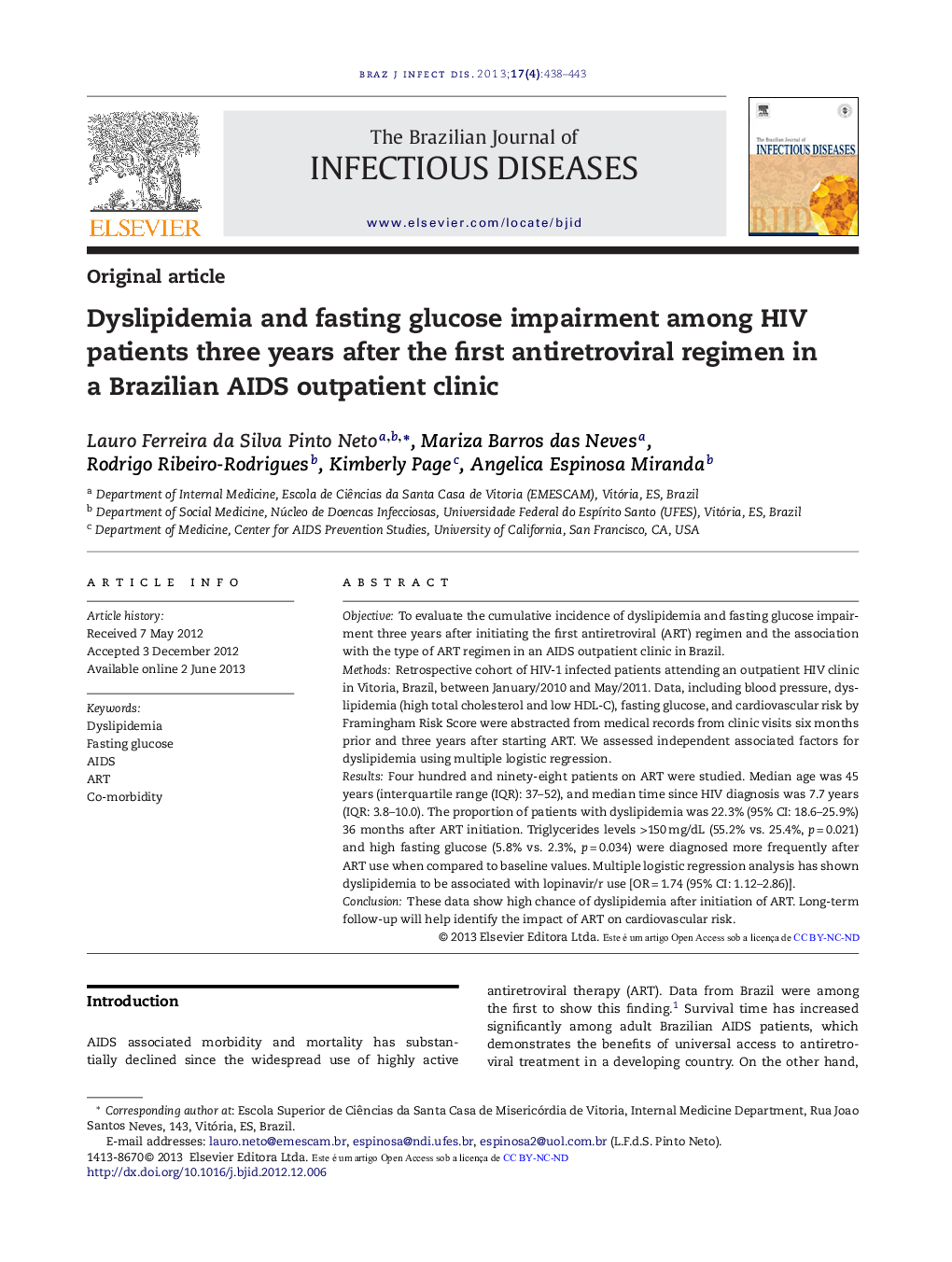| Article ID | Journal | Published Year | Pages | File Type |
|---|---|---|---|---|
| 3344227 | The Brazilian Journal of Infectious Diseases | 2013 | 6 Pages |
ObjectiveTo evaluate the cumulative incidence of dyslipidemia and fasting glucose impairment three years after initiating the first antiretroviral (ART) regimen and the association with the type of ART regimen in an AIDS outpatient clinic in Brazil.MethodsRetrospective cohort of HIV-1 infected patients attending an outpatient HIV clinic in Vitoria, Brazil, between January/2010 and May/2011. Data, including blood pressure, dyslipidemia (high total cholesterol and low HDL-C), fasting glucose, and cardiovascular risk by Framingham Risk Score were abstracted from medical records from clinic visits six months prior and three years after starting ART. We assessed independent associated factors for dyslipidemia using multiple logistic regression.ResultsFour hundred and ninety-eight patients on ART were studied. Median age was 45 years (interquartile range (IQR): 37–52), and median time since HIV diagnosis was 7.7 years (IQR: 3.8–10.0). The proportion of patients with dyslipidemia was 22.3% (95% CI: 18.6–25.9%) 36 months after ART initiation. Triglycerides levels >150 mg/dL (55.2% vs. 25.4%, p = 0.021) and high fasting glucose (5.8% vs. 2.3%, p = 0.034) were diagnosed more frequently after ART use when compared to baseline values. Multiple logistic regression analysis has shown dyslipidemia to be associated with lopinavir/r use [OR = 1.74 (95% CI: 1.12–2.86)].ConclusionThese data show high chance of dyslipidemia after initiation of ART. Long-term follow-up will help identify the impact of ART on cardiovascular risk.
